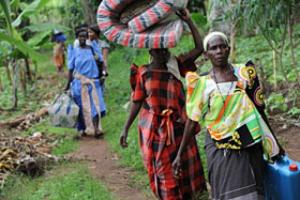The journey home after having tested negative for Ebola
An outbreak of Ebola haemorrhagic fever in Uganda’s Kibaale district, about 220 km west of the capital Kampala, in July/August 2012 has affected the lives of many.
The Ebola virus can cause severe haemorrhagic fever, which kills up to 90% of those infected. Although the origins of the virus are still imperfectly understood, its home is the rainforests of central Africa. Humans are often infected after contact with infected animals such as primates, and the virus is transmitted from human to human through contact with bodily fluids. Symptoms include fever, intense weakness, muscle pain, followed by vomiting, diarrhoea, rash, impaired kidney and liver function, and sometimes bleeding. There is no antiviral medicine or vaccine for Ebola.




